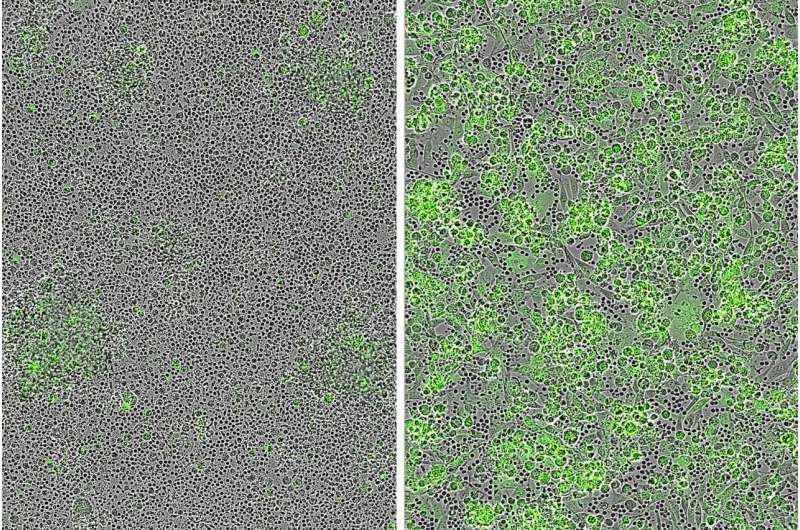This article has been reviewed according to Science X's editorial process and policies. Editors have highlighted the following attributes while ensuring the content's credibility:
fact-checked
trusted source
proofread
Promising target for CAR T-cell therapy leads to potent antitumor responses against cutaneous and rare melanomas

Scientists at the UCLA Health Jonsson Comprehensive Cancer Center have built and demonstrated the potential efficacy of a new chimeric antigen receptor (CAR) T-cell-based immunotherapy specifically designed to treat patients with cutaneous and rare subtypes of melanoma.
CAR T-cell therapy uses genetically engineered versions of a patient's immune cells to target and destroy cancer cells. This type of treatment has transformed the field of cancer, especially for people with challenging-to-treat cancers.
The new approach, described in Nature Communications, uses an engineered CAR T-cell that is designed to recognize and attack cells with high levels of TYRP1, a protein found on the surface of melanoma cells. The team found these engineered CAR T-cells can effectively eliminate cancer cells in preclinical tests without causing severe side effects.
"One of the biggest challenges in CAR T-cell therapies is the scarcity of suitable tumor targets," said Cristina Puig-Saus, Ph.D., assistant professor of medicine at the David Geffen School of Medicine at UCLA and senior author of the study. "While TYRP1 has previously been targeted in clinical trials using monoclonal antibodies, this new approach harnesses the power of CAR T-cell therapy and has led to very good anti-tumor responses, improving the treatment's overall effectiveness."
Despite the success of immune checkpoint blockade, a considerable number of patients with melanoma either do not respond well or experience relapse after initial success. Scientists are exploring new ways to create more precise and effective treatments. Moreover, rare subtypes of melanoma present additional challenges due to their resistance to standard therapies, including immunotherapies like immune checkpoint blockade.
To find better ways to use CAR T-cell immunotherapy to treat melanoma, the team first looked to find an antigen that could be used to target a protein that is expressed on the surface of the cancer cells, but presents lower expression in normal cells.
Through analyzing three different melanoma datasets, they identified TYRP1, which plays a key role in melanin synthesis, and its surface expression is more prominent in melanoma cells than in normal tissues.
They found approximately 30% of patients with cutaneous melanoma present high overexpression of TYRP1. Importantly, the percentage of overexpression was even higher in patients with rare melanomas. The authors showed that 60% of patients with acral and mucosal melanoma and around 90% of patients with uveal melanoma overexpress TYRP1.
"This protein is intracellular, but a small portion gets to the plasma membrane as part of the vesicular transport of the cell and gets endocytosed again after a short period of time. While in the cell surface, it becomes a target for the CAR T-cells," said Puig-Saus, who is a member of the UCLA Health Jonsson Comprehensive Cancer Center and the Eli and Edythe Broad Center of Regenerative Medicine and Stem Cell Research at UCLA.
To investigate the potential new target, the team designed a CAR construct that specifically targeted cells with elevated TYRP1 expression and then tested the newly engineered CAR T-cell in different types of melanoma models.
With this design, they found the CAR T-cells completely eradicated cancer cells in both cell lines and animal models, showcasing promising results without inducing toxicity or causing adverse effects related to the treatment.
"These preclinical results pave the way for clinical trials, where the TYRP1-targeting CAR T-cell therapy can be tested in patients with all different types of melanomas," said Puig-Saus. "If proven safe and effective in human trials, this treatment presents an exciting prospect for future advancements in the fight against cancer."
The research team is planning to move forward with a clinical trial to assess the therapy's safety and effectiveness in treating patients with melanoma.
More information: Sameeha Jilani et al, CAR-T cell therapy targeting surface expression of TYRP1 to treat cutaneous and rare melanoma subtypes, Nature Communications (2024). DOI: 10.1038/s41467-024-45221-2



















